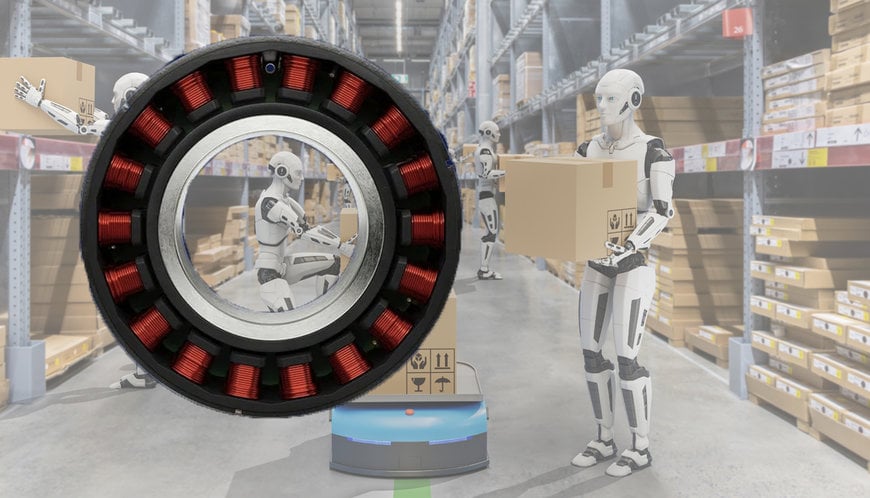What does it take to bring humanoid robots from concept to reality?
Gerard Bush, Sales Manager at motion specialist INMOCO explores the journey from designing humanoid robots to delivering them for practical use, highlighting the key challenges and solutions in this evolving field.

The human body is remarkable for its ability to navigate diverse environments, handle complex tasks, and adapt to varied conditions. These capabilities make it an ideal model for humanoid robots, which are increasingly essential in modern industrial settings where human flexibility and machine precision must coexist.
Bridging automation gaps
In many advanced manufacturing and industrial environments, humans still play a critical role in bridging the gaps between fixed automation systems. Human-centric tasks can vary daily and require a level of autonomy and flexibility that traditional machines lack. However, human strength and endurance have their limits, and the risk of injury is ever-present. Additionally, high turnover in demanding jobs can disrupt operations, making it clear that there’s a need for a better solution.
Humanoid robots are ideal for filling these roles, taking on tasks that are too dangerous or monotonous for humans, therefore freeing workers for more creative and less hazardous jobs. Over the past decade, significant advancements in humanoid technology have made these robots more viable. Improvements in vision systems, tactile sensors, battery power, artificial intelligence, and processing speeds have all contributed to this progress. However, the fundamental requirement for any humanoid robot is effective motion. Without it, robots cannot perform their intended tasks efficiently.
Design challenges
Creating a humanoid robot that moves like a human involves addressing numerous technical and commercial challenges. From a technical perspective, robots must have motors and actuators designed specifically for humanoid motion. These components need to be compact, lightweight, and capable of delivering precise, powerful movements. For instance, motors designed for drones might seem suitable but often fail to meet the torque and speed consistency required for humanoid joints.
Commercially, the design must also be manufacturable and marketable. A motor that fits the technical requirements but is too expensive or difficult to produce can hinder the robot’s market success. To overcome these issues, a balance must be struck between performance and cost-effectiveness. Custom solutions, while ideal in terms of performance, can be prohibitively expensive and challenging to scale.
Motion strategy
An effective motion strategy starts with a thorough understanding of the requirements for each robotic joint. This includes dynamic torque and speed ranges, inertial loads, and targets for weight and installation footprint. Instead of beginning with the motor, designers should first specify the mechanical system, including the gearbox architecture. This approach ensures that the motor and gear system are perfectly matched.
For humanoid robots, rotary joints are the most common, and harmonic gearing is particularly well-suited for these applications. Harmonic gearing provides high reduction ratios, zero backlash, compact form factors, and resilience to impact loads, making it an excellent choice for replicating human joint movements.
Prototyping and scaling
Once a joint architecture is designed, it’s crucial to evaluate whether the components can scale from prototype to full production. This involves considering the availability, functionality, and reliability of each component. Prototypes often face time and budget constraints, which can lead to suboptimal designs that need to be reworked, adding cost and delay.
Involving both R&D and production teams from the beginning helps ensure that the design is manufacturable and marketable. This integrated approach can prevent costly redesigns and ensure that the final product meets both performance and market demands.
Manufacturing excellence
Humanoid robots, like all advanced machines, require precise and reliable components. For instance, frameless servo motors, such as the TBM2G from Kollmorgen, are designed specifically for robotic joints. These motors are compact, energy-efficient, and capable of operating at lower temperatures, which enhances the reliability and longevity of the robot. They are typically available in various sizes and winding variations to optimise performance for different applications, including battery-operated robots.
Tomorrow’s world
The development of humanoid robots involves overcoming significant technical and commercial challenges. By adopting a strategic approach to motion design, emphasising manufacturability, and leveraging advanced technologies, it’s possible to create robots that not only mimic human movements but also operate efficiently and reliably. Automation vendors such as Kollmorgen are at the forefront of this field, providing a solutions approach with the components and expertise necessary to bring these sophisticated machines from concept to reality.
As the field of humanoid robotics continues to grow, ongoing innovation and collaboration will be key to delivering robots that enhance productivity and safety across various industries.
www.inmoco.com

